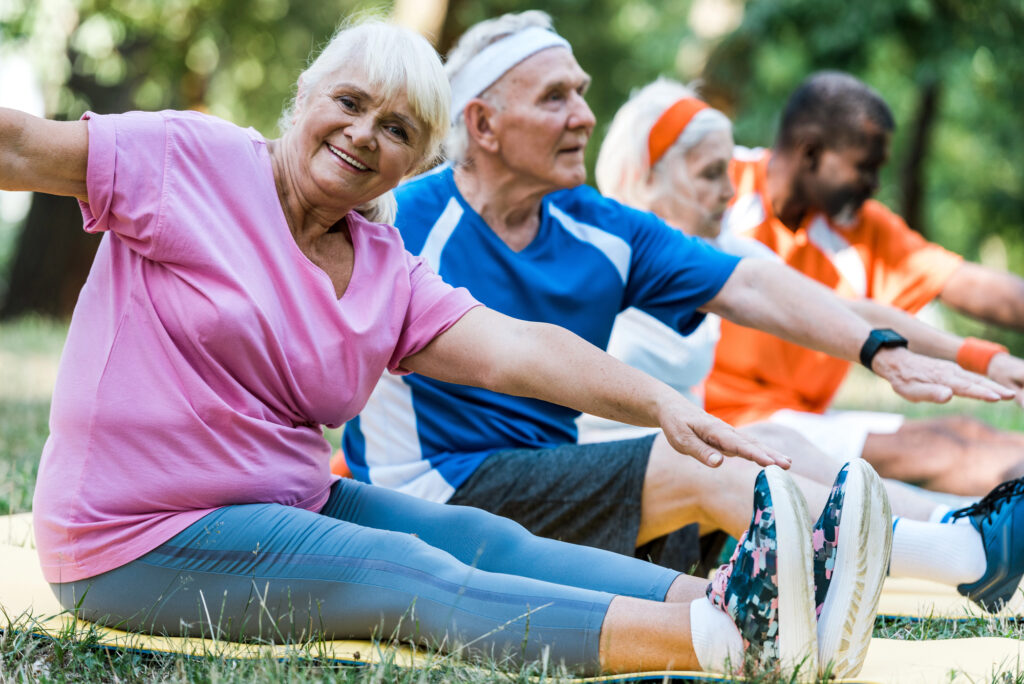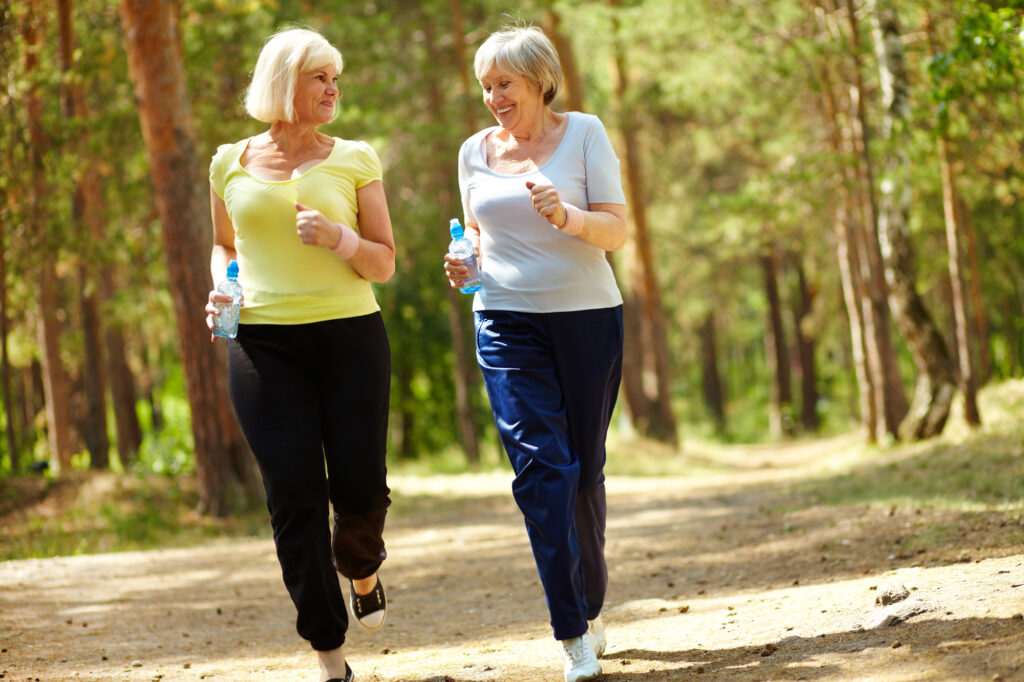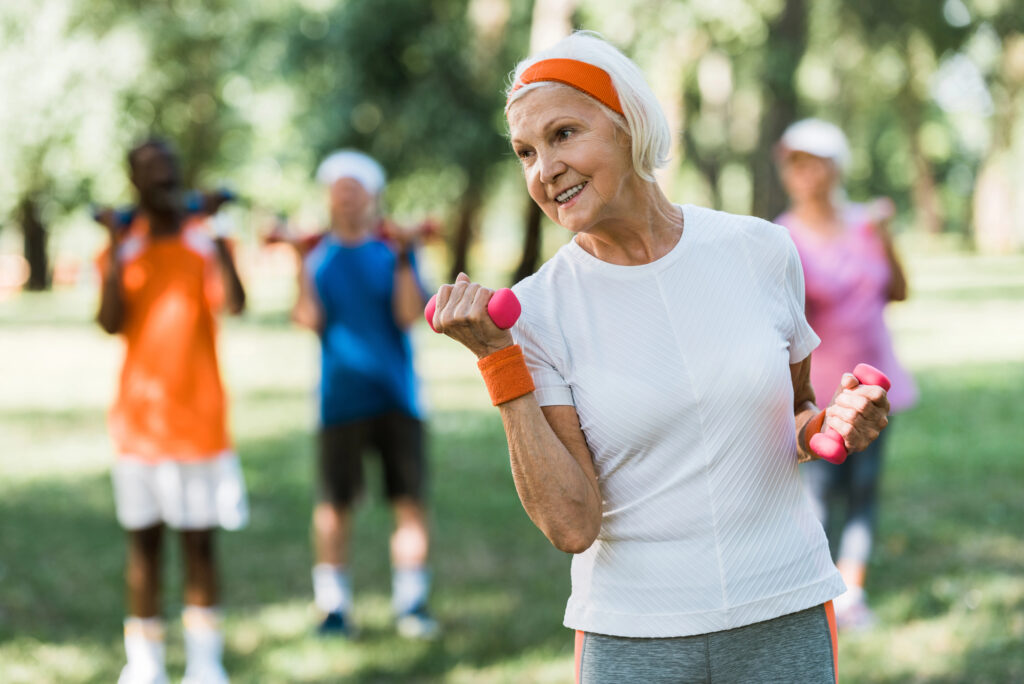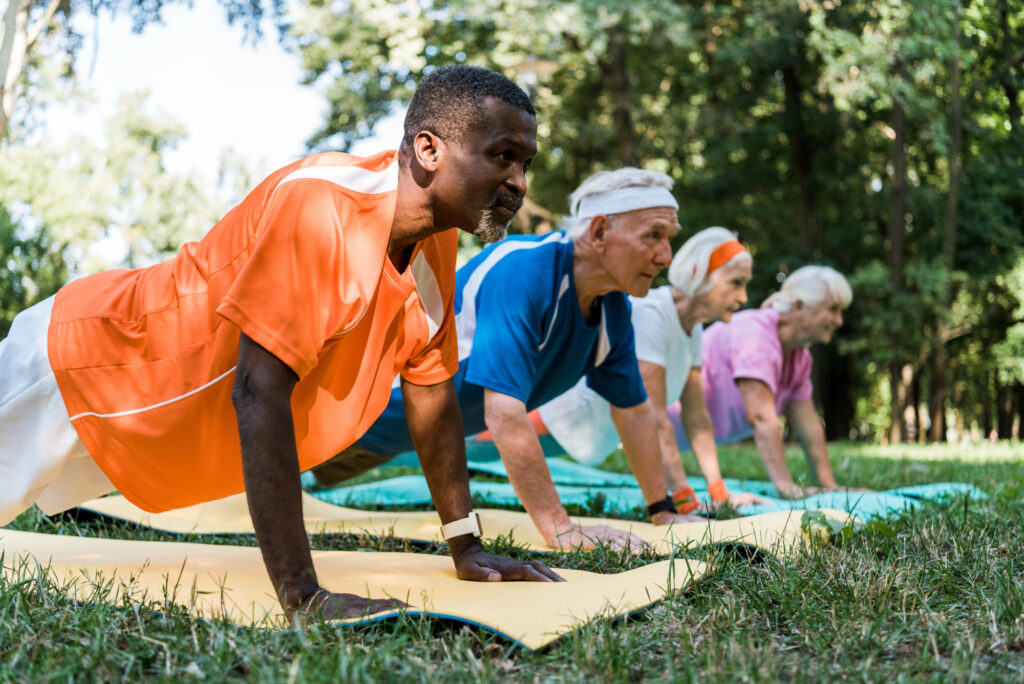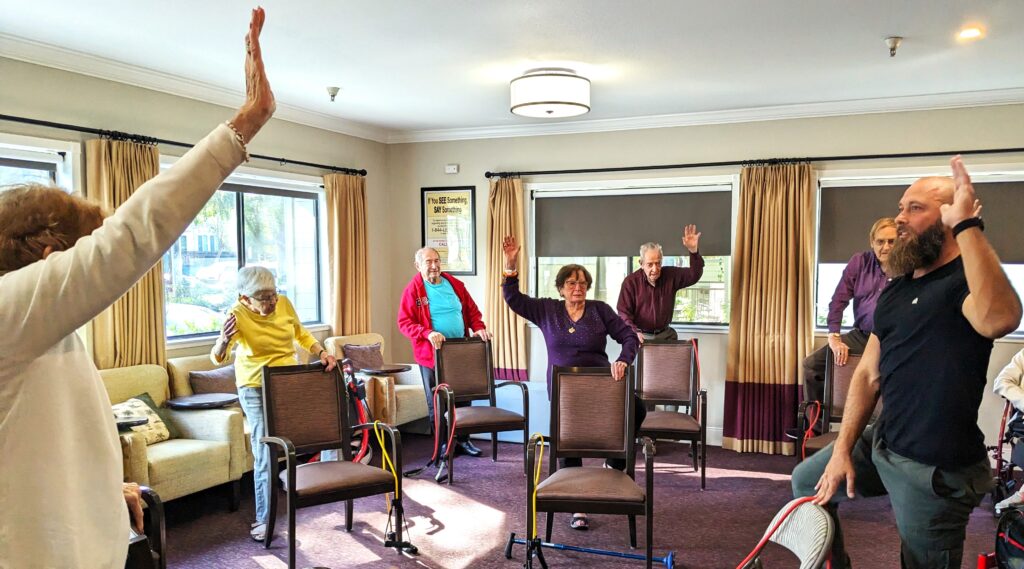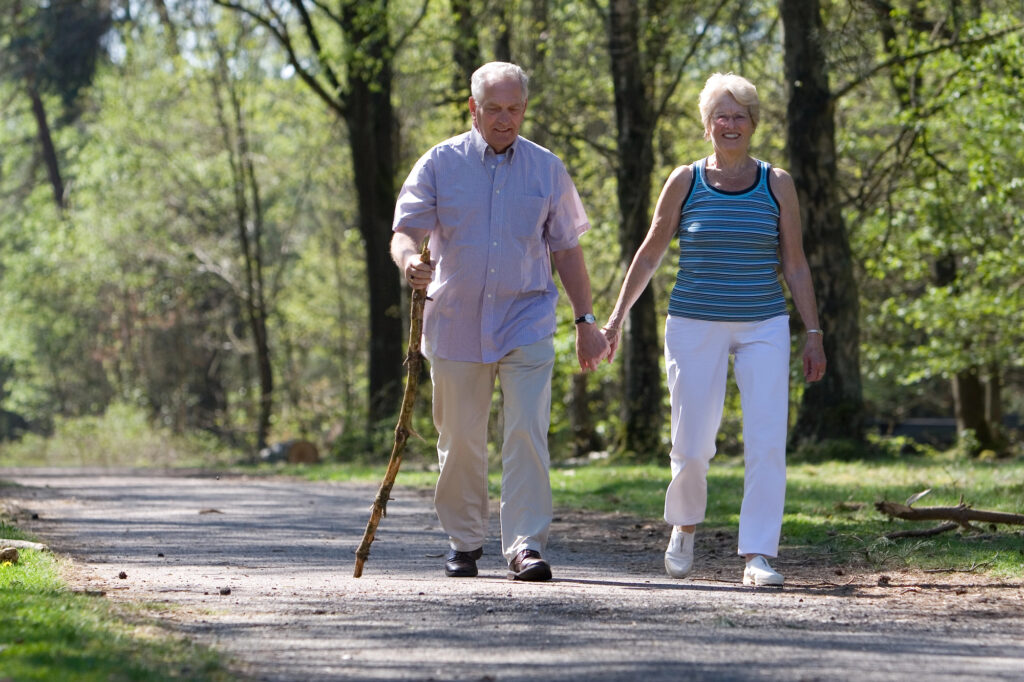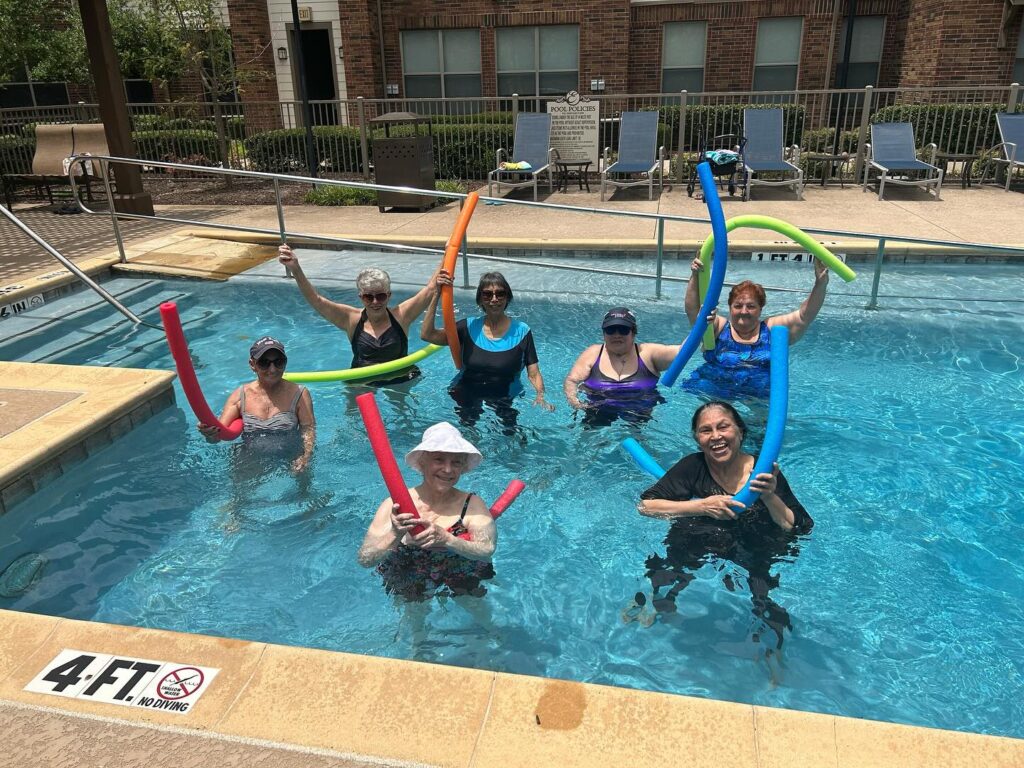As you already know, it’s difficult for anyone to get motivated to join a fitness, and older adults are no different. Or, if you’re a senior, how hard can it be to stay motivated?
Communities increasingly know how fitness classes and a more active lifestyle improve the lives of seniors, from fighting cardiovascular diseases to preventing falls. Still, participation rates in senior fitness classes often fall short of expectations.
Increasing participation in senior fitness classes requires more than just offering more sessions — it demands a thoughtful approach to engagement that resonates with this unique demographic, along with understanding the barriers that prevent older adults from enrolling and making a change towards a more active lifestyle.
By implementing strategic tactics that address their specific needs and preferences, we can create a vibrant community of active seniors.
In this blog post, we’ll explore proven strategies that can help facilities effectively engage residents and promote higher participation in fitness programs tailored for older adults.
Common Barriers to Activity for Seniors
As important as regular exercise is for seniors, many face significant barriers that make it challenging to change to or maintain an active lifestyle.
Understanding these barriers is the first step for both senior centers and residents in helping overcome them, paving the way for improved mental health, increased longevity, and better fall prevention.
- Physical Limitations: Many seniors experience chronic conditions like arthritis, joint pain, or reduced mobility, making certain forms of exercise uncomfortable or seemingly impossible. This can discourage them from starting or maintaining a routine, as they may fear exacerbating their discomfort or injury.
- Fear of Injury or Falling: Seniors may worry about falling, straining a muscle, or overexerting themselves during physical activity. This fear can lead to avoidance of exercise altogether, particularly activities that feel unfamiliar or challenging.
- Lack of Energy: Fatigue or low energy levels, often linked to aging or health conditions, can make exercise feel like a daunting task. Seniors may perceive exercise as more exhausting than energizing, reducing their motivation to stay active.
- They Can’t Perceive the Benefit of Exercise: Another significant hurdle in motivating seniors to participate in fitness classes is a lack of energy. This barrier often stems from a sedentary lifestyle, which can diminish physical stamina and adversely affect mental health. Or it comes from the mistaken belief that exercise won’t significantly impact their health or quality of life at their age.
- Lack of Social Motivation: Without a workout partner or social encouragement, seniors may feel unmotivated or lonely when exercising. Lack of companionship can turn exercise into a solitary chore rather than an enjoyable social activity.
- Limited to No Access to Equipment or Areas for Exercising: Seniors living in communities without access to gyms, walking paths, or fitness classes tailored to their needs may struggle to find suitable activities. A lack of resources or facilities can make even light activities seem inaccessible or impractical.
- Financial Constraints: The cost of gym memberships, fitness classes, or equipment can be prohibitive for seniors on fixed incomes. Financial worries can deter seniors from exploring structured or specialized exercise programs. This is why it’s important for community centers, local nonprofits, and health organizations sometimes to offer exercise programs tailored to seniors’ needs.
- Simple Lack of Knowledge or Guidance: Often, it’s a simple lack of knowledge or guidance that holds them back. Many older adults aren’t aware of the specific advantages that physical activity offers, such as enhanced muscle strength, improved balance, weight loss, and effective falls prevention. Without this vital information, they may not see the urgent need to participate in fitness activities. Seniors may also feel unsure about what types of exercise routines are safe, effective, or enjoyable for their age and fitness level. Uncertainty about where to start can lead to inactivity due to fear of doing the “wrong” kind of exercise.
The good news is that many of these barriers can be addressed with simple strategies, support, and resources. By addressing these barriers with empathy and creativity, seniors and their caregivers can unlock the transformative benefits of regular physical activity, making exercise a rewarding part of everyday life.

How to Encourage Senior Residents to Exercise
Senior community centers play a vital role in promoting physical activity among older adults. By fostering an environment that makes exercise accessible, enjoyable, and tailored to seniors’ needs, these centers can inspire residents to prioritize their health.
Here are some effective strategies:
Clearly State the Health Benefits of Regular Exercise
Many seniors are more motivated to exercise when they understand how it improves their quality of life. Education demystifies exercise and shows residents how small steps can lead to big health improvements.
The following benefits can be learned or appreciated through workshops, seminars, and sharing success stories about how they can improve mental health and longevity, help with fall prevention, and more:
- Physical Health: Engaging in regular exercise can significantly enhance physical health among seniors. It contributes to improved muscle strength and muscle mass, cardiovascular fitness, flexibility, bone density, blood pressure, and coordination, which are crucial for maintaining mobility and independence as one age. It has also been shown to aid in managing chronic diseases like heart disease, arthritis, and even the effects of dementia.
- Falls Prevention: One of the most critical benefits of exercise for seniors is falls prevention. Strength training and balance exercises are especially effective in activating major muscle groups that help to reduce the risk of falls and overall functional ability, which can lead to serious injuries. Programs that focus on enhancing balance can empower seniors to move with confidence.
- Mental Health: Exercise is not only beneficial for physical well-being or treating medical conditions; it also plays a vital role in mental health. Regular physical activity can alleviate symptoms of depression and anxiety, improve mood, and boost overall cognitive function, allowing seniors to enjoy a more fulfilling life.
- Improved Sleep: Hormonal and physical changes can affect sleep patterns in older adults. Regular exercise sessions have been shown to promote better sleeping habits by helping to regulate sleep cycles and reducing difficulties in falling asleep. This, in turn, can lead to increased energy levels during the day as well as benefits in heart health and mental health.
- Social Benefits: Participating in exercise programs provides seniors with opportunities to connect with others, reducing feelings of loneliness and isolation. Group activities like dance class, Yoga, and others foster community and camaraderie, enhancing social bonds and emotional well-being.
By highlighting these benefits, senior residents are more likely to see the value in participating in exercise programs and classes, leading to a more active and enriched lifestyle.
Start With A Gradual Exposure
Gradual exposure to exercise, starting with small, achievable goals, can help reduce fear of injury. Encouraging gentle movements initially can build their confidence and interest. It’s essential to highlight how even small steps can lead to improved well-being.
Exercise Programs Must be Customized
Evaluating each resident’s health and mobility allows care providers to design personalized routines. This guarantees everyone feels capable and confident, maximizing participation and minimizing risks despite any potential physical limitations.
Providing an exercise class designed specifically for seniors helps ensure exercises are safe, achievable, and beneficial.
Examples:
- Chair exercises, like chair yoga, for flexibility and joint health.
- Low-impact aerobic exercises for cardiovascular fitness, from aquatic exercises to simple dance classes.
- Tai chi for balance and fall prevention.
- Strength training or resistance exercises with resistance bands or light weights.

Provide One-on-One Support
Personalized encouragement can help hesitant seniors start exercising, as it builds confidence, particularly for seniors with health concerns or physical limitations.
- Offer consultations with personal trainers or physical therapists who can design individualized exercise plans.
- Assign peer mentors or “fitness buddies” to help newcomers feel more comfortable.
Monitor and Celebrate the Progress
Monitoring the progress of seniors’ fitness routines and celebrating their achievements can greatly boost their motivation.
Tracking improvements, like increased stamina or flexibility, provides tangible proof of success.
Here are several effective strategies for monitoring and acknowledging their progress:
- Set Clear Milestones: Define realistic and achievable goals that seniors can strive for, like certain weight loss, heart health, or flexibility goals, ensuring they feel a sense of accomplishment.
- Provide Regular Feedback: Offer consistent and positive reinforcement regarding their performance to keep them motivated.
- Host Celebration Sessions: Organize periodic gatherings to recognize and celebrate their milestones, fostering a sense of community and achievement.
- Send Personalized Notes: Individualized notes to commend their efforts are very helpful which can greatly enhance their motivation and morale.
- Utilize Visual Progress Charts: Create charts to visually represent their improvements, making it enjoyable and rewarding for them to see their journey and the distance they’ve covered, like improved balance, muscle mass, and cardiorespiratory fitness.
By incorporating these strategies, you elevate their spirits and their commitment to your fitness program.
Adjust Exercise Plans Based on Progress but Keep Achievable Goals
Regularly adjusting exercise plans according to the progress seniors make is essential for maintaining their interest and maximizing health benefits.
Trainers should assess improvements and challenges, tailoring routines that build on newfound strengths while accommodating limitations.
Nonetheless, even if seniors become more experienced, lose their fear of exercise, and their level of activity increases, keeping them motivated will require maintaining realistic goals in both their exercise classes and their daily activities.
This approach guarantees that any new range of exercise intensities feels less intimidating and more like a series of attainable victories, keeping them engaged and active.
Make it an Opportunity for Socializing
Social engagement can be a powerful motivator for seniors. As mentioned earlier, socialization is one of the main benefits of exercising in general and not just improving their functional ability with strength and balance training.
Organize group fitness classes or walking clubs to promote camaraderie or host fitness challenges with small prizes to build a sense of community and achievement, all the while they get their minutes of moderate activity into their schedule.
Exercise becomes more enjoyable when it’s tied to social connection, reducing feelings of isolation and boosting commitment.
Spread Exercises Throughout Daily Routine
Embedding physical activity into everyday routines helps normalize it as part of a healthy lifestyle.
Host gardening or light outdoor maintenance activities for residents who prefer practical, hands-on tasks. Include dance sessions, such as ballroom or line dancing, during social events that weren’t originally programmed specifically for fitness but can be turned into moderate-intensity exercise routines.
Encourage them to perform light activities, like stretches, while watching TV or to walk slightly longer paths to meals. This not only keeps their bodies active but also integrates additional activity seamlessly into their everyday lives, fostering a healthier lifestyle with minimal disruption.
Such habits contribute to sustained physical health.
Seniors who see exercise as fun and functional are more likely to stay active without feeling pressured.
Take Classes Outside
Building on the idea of incorporating exercise into daily routines, taking classes outside can dramatically enhance the appeal of physical activities for seniors, as long as they don’t have any physical limitations that will make this a risk to them.
Outdoor settings provide fresh air and natural scenery, which can uplift spirits and motivate participation.
It’s also an opportunity for social interaction in a safe, invigorating environment, making exercise feel less like a chore and more like a pleasant daily outing.
Find Ways to Make it Enjoyable and Dynamic
This point might now be obvious, but it is worth emphasizing, and the National Institute on Aging even has it as their top tip for seniors.
Personal trainers or caregivers should make exercise fun. It’s a tip to encourage exercise in individuals of any age, but it’s especially true of seniors. Seniors are more likely to exercise when it feels enjoyable rather than like a chore.
Organize themed fitness events, such as “80s Aerobics Day” or “Walk Across America” challenges. Incorporate games like chair volleyball or mini-bowling leagues for light physical activity.
Additionally, alternating instructors and environments keep the sessions fresh and engaging.
These changes guarantee seniors aren’t just staying active; they’re excited to participate in each new and diverse class offered.
Pair Seniors With Friends or Family in the Community
Another effective strategy is pairing seniors with friends or family in an exercise class who live in the same community.
This fosters a supportive environment, enhancing motivation and enjoyment.
It’s essential we facilitate these connections, enabling seniors to feel a sense of community and shared purpose, which greatly boosts their participation in regular fitness activities.
Leverage Technology like Fitness Apps and Group Chats
Incorporating technology, such as fitness apps and group chats, can considerably enhance exercise engagement among senior residents.
These tools motivate them by tracking progress and fostering a sense of community, as group chats allow seniors to share tips, celebrate milestones, and arrange meet-ups, making fitness a social activity.
This approach not only keeps them active but also deeply connected, enriching their exercise experience.
Make Facilities Safe and Convenient
Guaranteeing that exercise facilities are both safe and convenient greatly boosts the willingness of seniors to participate in regular physical activity.
- Provide handrails and non-slip floors.
- Install well-lit walking paths or indoor tracks for safe and consistent activity.
- Set up fitness rooms with user-friendly equipment designed for older adults.
- Offer a pool for low-impact water aerobics or swimming.
- Locate facilities close to residents’ living quarters, offering transportation and guaranteeing accessibility to encourage more frequent visits.
These thoughtful modifications demonstrate care and respect for the well-being and independence of our senior community members.
Live 2 B Healthy Fitness Programs Integrates Constant Encouragement for Seniors
Live 2 B Healthy has effectively integrated consistent encouragement into its fitness programs for seniors by applying many of the above methods.
They’ve recognized the power of motivation in maintaining regular participation, with trainers consistently applauding progress and effort while incorporating a more active lifestyle into their daily tasks, making seniors feel valued and capable.
This approach not only boosts their physical health but also uplifts their spirits, fostering a more vibrant community atmosphere that prioritizes well-being.




